Meet the Gorgeous Green Jay, a Tropical Bird
Updated: Jul. 10, 2024
Learn where you can see a green jay, plus what the birds look like, what they eat, and more about their calls and nesting behavior.
On This Page
What Does a Green Jay Look Like?
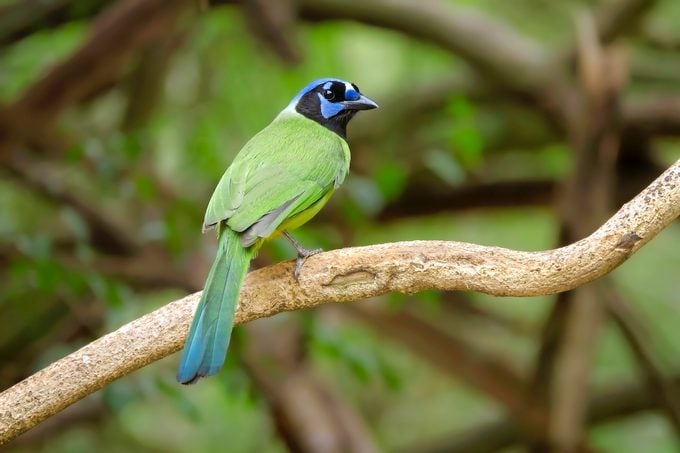
Jays are a familiar sight across much of the United States and Canada, with 10 jay species spread across the continent. These corvids are all visually striking in their own way, but perhaps none so much as the green jay, a tropical bird found in just one corner of the U.S.
These striking jays are on the larger side for songbirds, with thick sturdy bills and wingspans reaching 15 inches. As their name implies, green jays have bright green bodies and sharply marked blue-and-black heads. Black throats neatly delineate the pale yellow belly feathers. Tails are green on top and yellow beneath.
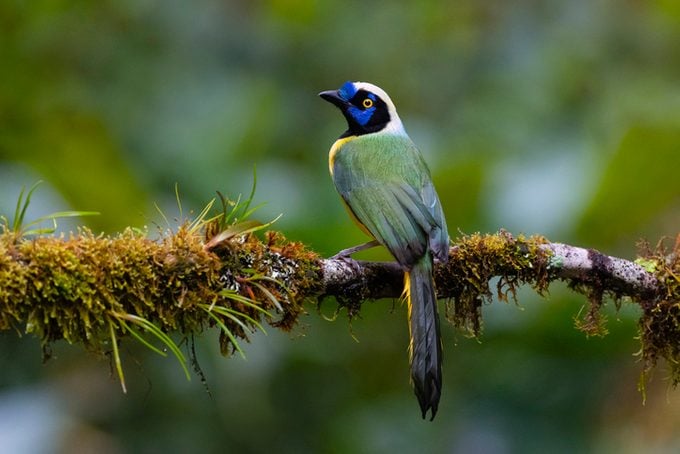
In South America, green jays are sometimes called Inca jays. They sport a blue tufted crest between their eyes, their bellies are a brighter yellow, and they have a white or cream patch on the tops of their heads and backs of their necks.
Learn how to identify and attract blue jays.
Green Jay Range and Habitat
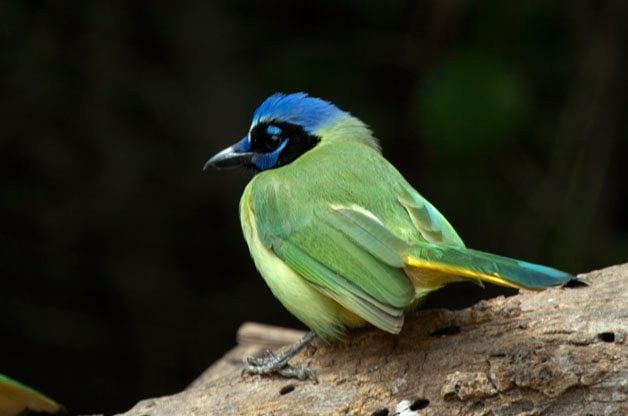
To see this unique flier in the U.S., you’ll have to travel to southern Texas, which is the very northern edge of the green jay’s range. Green jays are also found in parts of Mexico and northern Central America, with a second population in South America—however, some think those birds, living almost 900 miles away, are an entirely different species because they are larger and live in different habitats.
Where they live in south Texas, green jays prefer wooded habitats, specifically thickets of mesquite, sabal palm and huisache, often along rivers or streams. They also visit fruit farms, particularly citrus groves. It’s common to see them foraging in small groups, usually consisting of family members.
Look for a California scrub-jay on the west coast.
Green Jay Hotspot
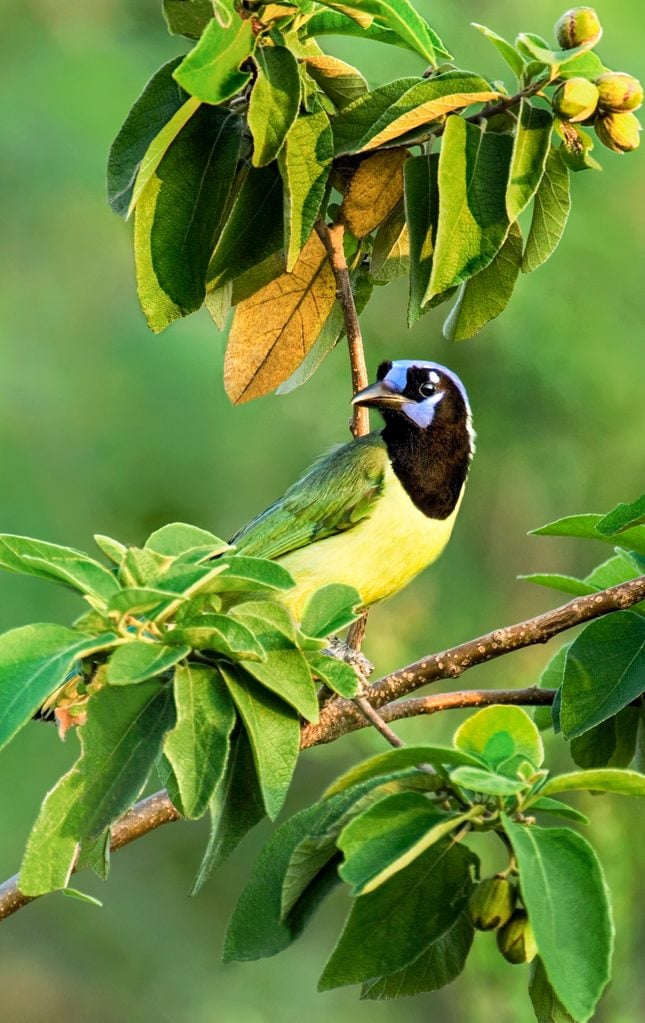
To see green jays and other South Texas specialties, such as great kiskadees and chachalacas, visit Santa Ana National Wildlife Refuge in Alamo, Texas.
Look for these 8 species of hummingbirds in Texas.
What Do Green Jays Eat?
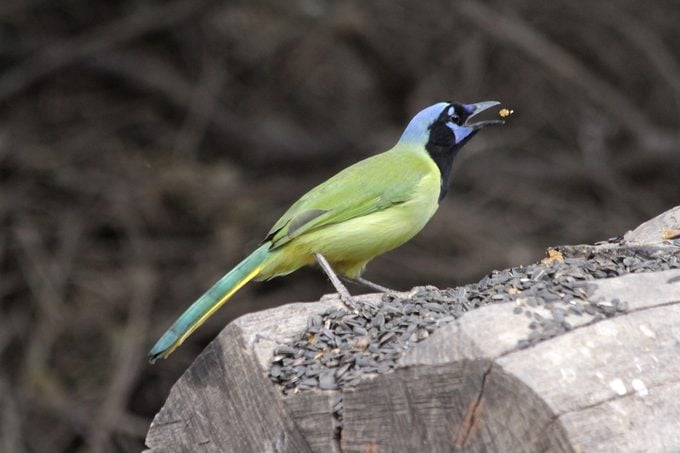
Green jays are omnivorous, dining on seeds, fruit, insects and small vertebrates. This gregarious species forages in family groups, with each bird checking out its own tree or bush in an area before they all move on to the next foraging ground.
Green jays visit bird feeders for seeds too. In fact, one of the best ways to see them in the U.S. is to watch the feeders at a birding refuge in south Texas, and wait for them to drop in for a snack.
Did you know the blue jay’s range is expanding westward?
Green Jay Mating and Nesting
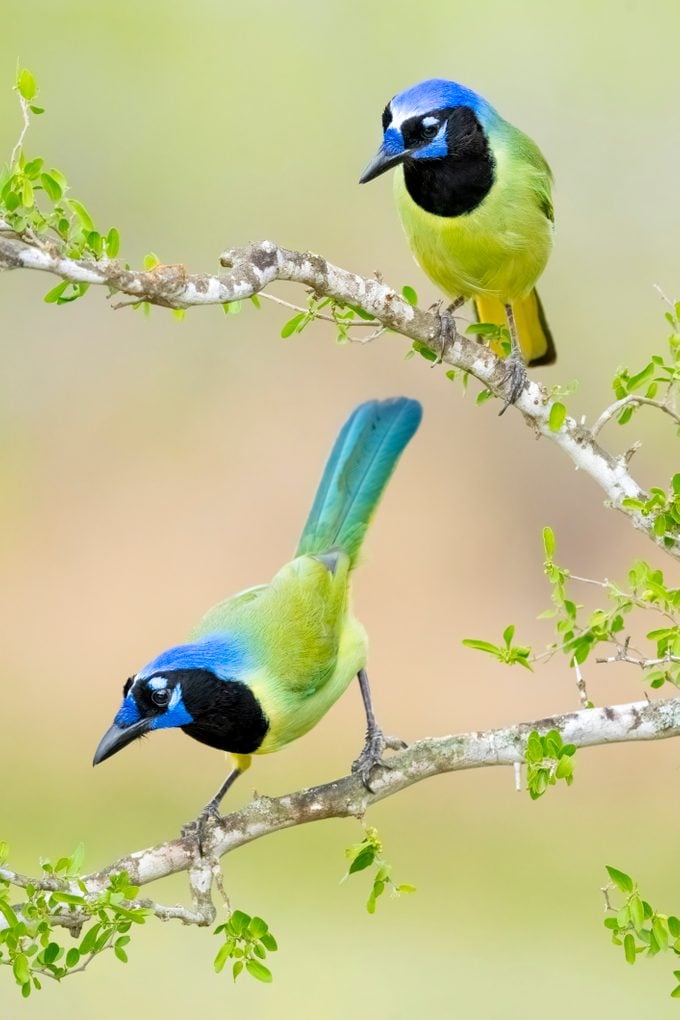
These monogamous birds form a close pair bond, especially during the breeding season. Together they choose a site, build a nest, incubate the eggs and share parenting duties until the nestlings fledge about three weeks after hatching. Juveniles spend about a year in the same area as their parents before starting their own breeding lives.
Canada jays are curious, cold-hardy birds.
Green Jay Sounds and Calls
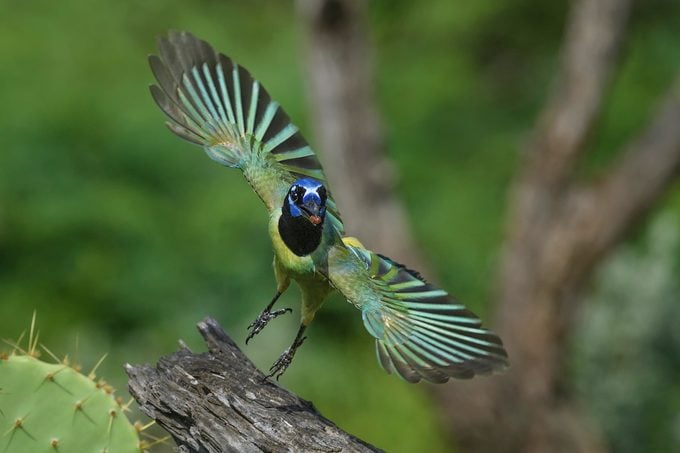
Jays are incredible mimics, and green jays are no exception. They repeat the calls of hawks and other predators to scare other birds away from food sources. A flock is noisy, and the green jays are in constant communication as they forage for food and warn others of potential danger nearby.
Bird sounds courtesy of the Cornell Lab of Ornithology
Learn about the clever and striking Steller’s jay.
The Importance of the Rio Grande Valley for Birds
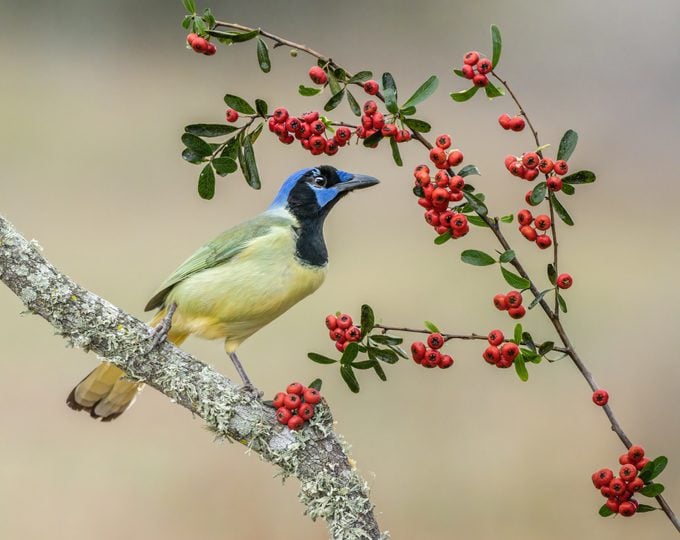
Several bird species found in the Rio Grande Valley of southern Texas aren’t found anywhere else in the U.S. Why? According to traveltexas.com, the 120 miles along the Rio Grande offers highly diverse landscapes, ideal climate and unique protected habitats. Nine birding sites in the area are known as the World Birding Center.






















